When you get hungry and feel like something tasty, I’m guessing that most of you have never considered cracking a raw egg on top of some cooked rice. Many of you may even feel disgusted just by thinking about it, or maybe get worried about Salmonella poisoning. Yet, this simple tamago kake gohan 卵かけ 御飯, consisting of only the two ingredients mentioned above (though usually you add a bit of soy sauce), is an eggs-elently delicious meal to many Japanese people. Since it is such a simple meal, some people refuse to consider the preparation of tamago-kake-gohan as “cooking”. Yet, famous Japanese cooking expert Harumi Kurihara introduced this dish in her Japanese cook book for foreigners: “Harumi’s Japanese Cooking“. There are now a lot of restaurants in Japan that actually specialize in serving this raw egg over cooked rice dish, and some are eggs-tremely famous. There is even an annual tamago-kake-gohan symposium! I know it’s pretty hard to swallow, but isn’t it at least eggs-citing to learn about such a popular and unique Japanese dish? Please “chick out” today’s post to get egg-ucated in this Japanese meal!
*Author’s Note: Tamago kake gohan is also called Tamago Bukkake Gohan 卵ぶっかけ 御飯, Tamago Gohan 卵ご 飯, Tamago Gake Gohan 卵掛け 御飯, Tamago Kakka 卵かっか, Tamago Kake 卵かけ, Tamagohan たまご 飯, Tamatsuru たまつる, Bokkake Gohan ぼっかけご 飯, T.K.G. (Tamago Kake Gohan) , and several other variants depending on region and personal preference. Tamago kake gohan is the most common usage, but if your prefer another one, feel free to use it.
Editor’s Note: Sorry for all the puns, their egg-istance is due to how egg-cited they made me.
History Of Tamago-kake-gohan
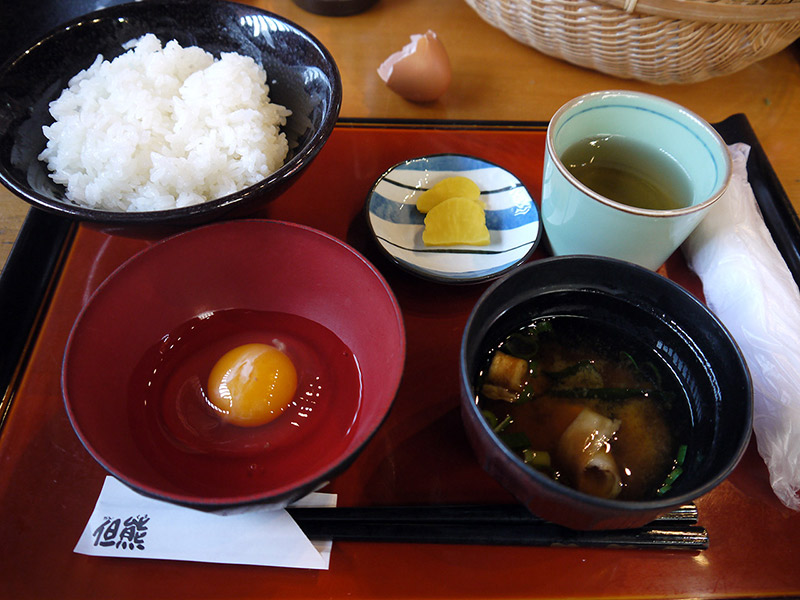
Since ancient times the main meat consumed by the Japanese people has been fish, because of the Buddhist commandment against killing animals. Although the consumption of chicken was a little bit higher than the consumption of other land-animals, the egg was not considered to be food for a long time. In Shintoism, the egg is regarded as an offering to the Gods, and people believed that they would be punished if they ate eggs.
During the Edo Period (1603-1868), people began keeping chickens as pets (what is this, Portland, OR?). Shortly after, eggs began to become a regular part of some diets because they quickly came to realize that unfertilized eggs didn’t hatch. One result of this new knowledge was that they could stop considering an egg as a creature under heaven. Because of that, people eventually lost the belief that eating an egg was a sin, so the act of doing so was no longer taboo. They then moved on from having chickens as pets to having chickens for the sole purpose of egg production and collection. Because eggs were considered a luxury and were a very expensive food item for a long time, nobody ever dreamed about using eggs for such a simple dish like tamago-kake-gohan.
The first person to make tamago-kake-gohan is said to be Ginko Kishida (1833-1905), who was considered a pioneer in various things. For example, not only was he Japan’s first war reporter, but he was also the creator of line dancing. In addition to this, Ginko was a close friend of James Curtis Hepburn, who made the Hepburn Romanization System. Ginko also helped him to make the Japanese-English dictionary, which, in case you haven’t heard of it, is called “Wa-eigo-Rinshuusei 和英語林集成”. My favorite accomplishment of Ginko’s was his invention of tamago-kake-gohan, which he did during the Meiji Era (1868-1912). He was amazed at how tasty it was and recommended it to everyone he knew. His affection for his tamago-kake-gohan did not go unnoticed and it was introduced to the public in a magazine. That issue wrote about how he puts 3-4 eggs on top of cooked rice for breakfast.
The Special Soy Sauce Only For Tamago-Kake-Gohan
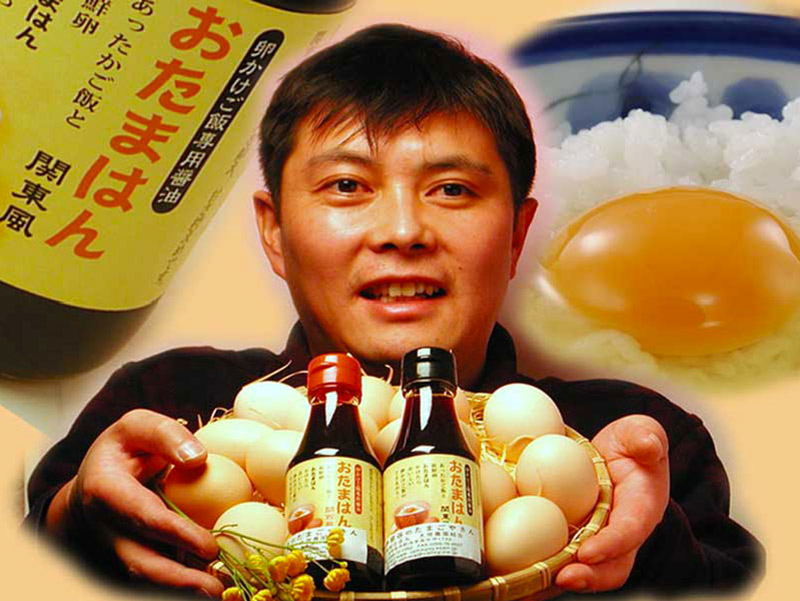
Because of Ginko, tamago-kake-gohan gradually spread among the Japanese populace, but for a long time all it really could become was a popular comfort food eaten in people’s homes. It wasn’t until a special soy sauce made strictly for tamago-kake-gohan was made (in the early 2000s) that it really became a big hit. It sounds like some guy just got really lucky and made a lot of money because he was struck with an idea for a unique take on soy sauce, but the fact is that it only became a hit after a lot of work and effort on his part.
This special soy sauce was first produced by a group formed out of a public-private partnership, which was a joint venture between local government and private investors from a small mountain village named Yoshida, Iishi-gun, in Shimane Prefecture. Today, this village is now Yoshida Town Unnan City in Shimane prefecture. The town used to be famous and prosperous for its “Tatara Iron Manufacturing” plant, but they started having trouble as the manufacturing of steel blast furnaces came to Japan. Despite this, they didn’t give up and started making firewood, charcoal, and timber from nearby forests. But, due to energy revolutions of the time, jobs had to be cut again. Sadly, more and more people had to leave in order to get a job. The population was around 5,000 in 1955, but it dropped to 2,800 in 1980.
Some people living there were aware of the decreasing population, so they became very determined to increase it. They knew the biggest reason why young people were not settling down in the village was because there weren’t enough jobs to go around, so they decided to create job opportunities. They considered how they could improve upon something that was already a part of their community. They knew that they had tasty rice and wonderful vegetables, so at first they tried making pickles and nishime (which includes vegetables such as carrots, taro, konnyaku, etc). In order to achieve their goal, local government and residents had to combine efforts and work together.
The people had to convince every resident in the village that they had to do something to save the village and asked them for help. For 50,000 yen, you could get a single share of the company. They understood that was a great deal of money for poor villagers, but they ended up raising more money than they had expected because village groups, companies, and villagers (everyone, young and old alike) were resolute in their desire to make their community stronger and better. Thus, a public-private partnership company, named Yoshida Furusato Mura Co., Ltd., was established in April of 1985.
A very long time passed until they stumbled upon their idea for their tamago-kake-gohan soy sauce. It began when a chicken farmer made the request: “Could you make something that we can sell with our eggs?” Just like that, the soy sauce venture got underway in March, 2001. The initial conception of how this sauce was going to taste was very difficult to come by as they had no other sauces to build off of or compare to. They had numerous meetings, made an infinite amount of samples, and conducted countless taste tests with rice until, finally, the first specialty soy sauce, named おたまはん (Otamahan) was born a year later in May, 2002.
Tamago-kake-gohan Boom
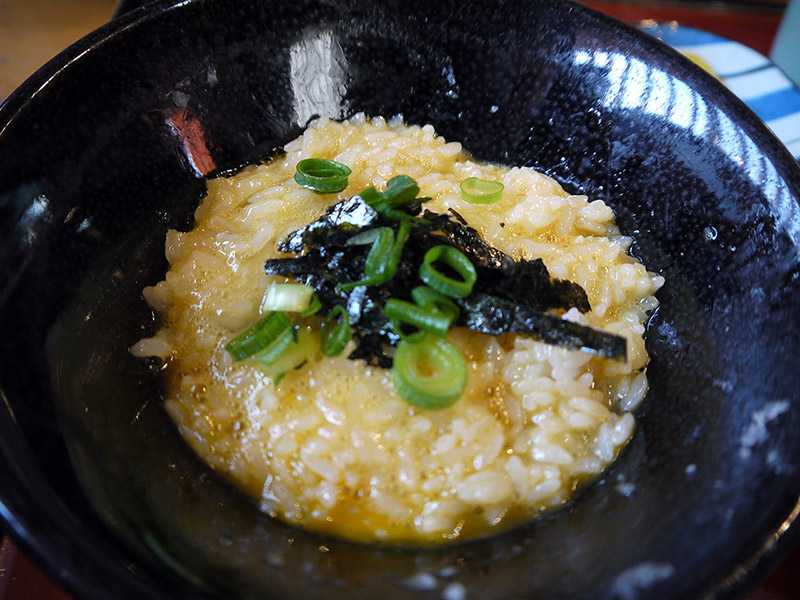
Thanks to the unique concept, great taste, cute name, and assurances that only all-natural ingredients and very little fertilizer was used, it built itself a nice reputation. They started selling it with rice out of Yoshida Town and the success became evident soon after sales began. It wasn’t long before they had a 4-month back order.
Today, there are more than 50 kinds of Tamago-kake-gohan soy sauces sold in Japan, and there is a vast number of popular restaurants that only serve tamago-kake-gohan. That should help to give you an idea of how popular this dish (and this soy sauce) has become.
The people of the Yoshida Town community were reminded of the importance of tamago-kake-gohan to the Japanese by witnessing the boom they basically created. So, they made a “Tamago-kake-gohan Symposium Committee.” When Yoshida Town held the first “Japanese Tamago-Kake-Gohan Symposium” for three days in October of 2005, around 2,500 people came from all over Japan. That’s a lot of people for a village with a population of around 2,300. And, the people attending weren’t just ordinary folks like you and me. There were many TV and radio stations attending as well, and the news about the symposium was reported all over Japan, which helped popularize Tamago-kake-gohan even more.
Safety And Nutrients
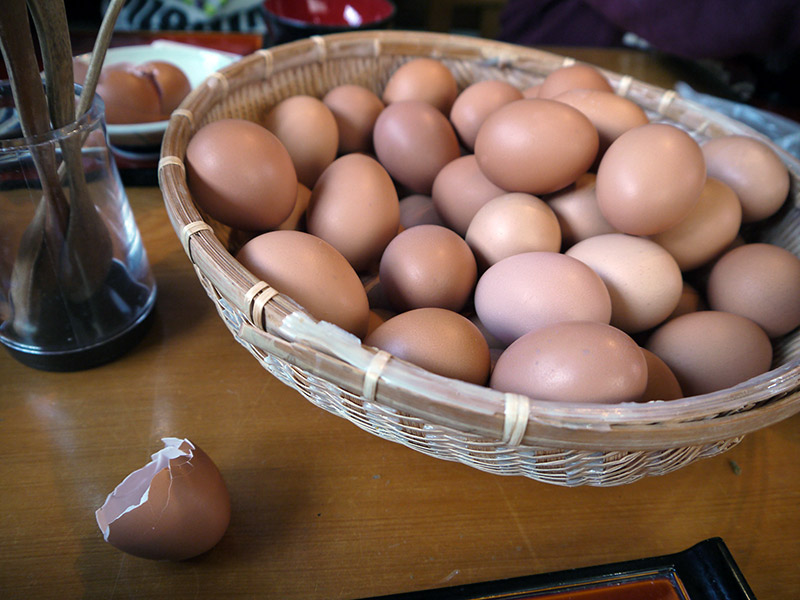
Eggs contain many nutrients and a good amount of protein. Though the bioavailability of cooked eggs is 91% (compared to 51% in raw eggs), other nutrients become denatured when exposed to high heat, so raw eggs have some special benefits as well, maximizing what the body can intake and process.
However, raw egg yolks are also known as a medium for Salmonella. Although Japanese egg farmers provide eggs that have been very well washed, as they expect Japanese people may consume them raw, the number of people getting salmonella poisoning in Japan has increased since the 90s. So be careful, everyone! I wonder if this is just in line with the increased popularity of tamago-kake-gohan or something else?
Salmonella is found in chicken intestines and it sometimes attaches itself to egg shells via chicken poop (there’s only one hole in a chicken, and it all comes out that one hole). Most Japanese eggs get sterilized at GP Center, which is a factory for grading eggs and packing them, but you shouldn’t eat an egg raw if it has a crack in its shell. Moreover, even if there is no crack in the egg shell, you shouldn’t eat a raw egg that has been left for a long time after cracking it open. If you want to eat raw eggs, please make sure to get fresh ones!
Tamago-Kake-Gohan Products
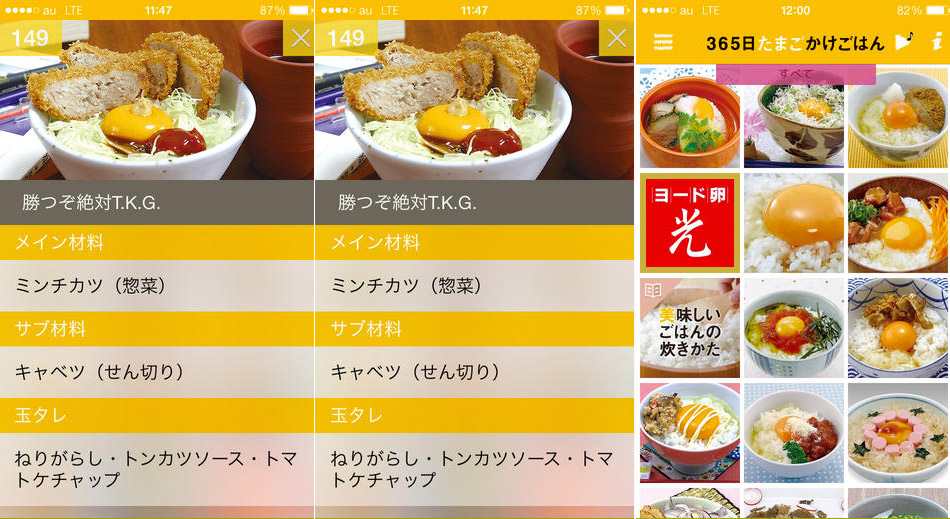
Following the tamago-kake-gohan boom, various products for tamago-kake-gohan were made. For example, there is a tamago-kake-gohan stirring rod which acts like a whisk to mix raw egg to a smoother consistency and also a tamago-kake-gohan T-shirt to express your love of tamago-kake-gohan.
Although it is such a simple recipe, there is a tamago-kake-gohan recipe book which boasts one recipe for each day of the year. The book has also become an app (which is only available on the Japanese iTunes store). Following the release of the book, they also made a catchy 365 day tamago-kake-gohan song that you can listen to on the app or you can buy the CD from here , if you like (there are some sound samples here, as well).
End Of A Boom?

Since the typical food boom usually only lasts for a couple years, some people say that the tamago-kake-gohan boom quickly reached its end, too. However, others point out that it has been a “staple” meal for Japanese people and will continue to be so in the future. I agree with the latter opinion. Regardless of whether it was a boom or not, I like tamago-kake-gohan and I will have it every time I come back to Japan.
In fact, I recently visited a famous tamago-kake-gohan place and wrote about it for Tofugu’s Travel Section. I was impressed to see such a long line of people waiting to eat such a simple meal, especially because the restaurant is located in such an inconvenient place. I was so impressed that I asked to do an interview with the president of the restaurant and he agreed (so we’ll post that up tomorrow!). Not to spoil it for you or anything, but he had the idea for tamago-kake-gohan long before the boom started and his road to success is such an interesting one. So, be sure to stay up all night hitting the refresh button on your browser so that you can find out how he took the simplicity of tamago-kake-gohan and made it into his life.
